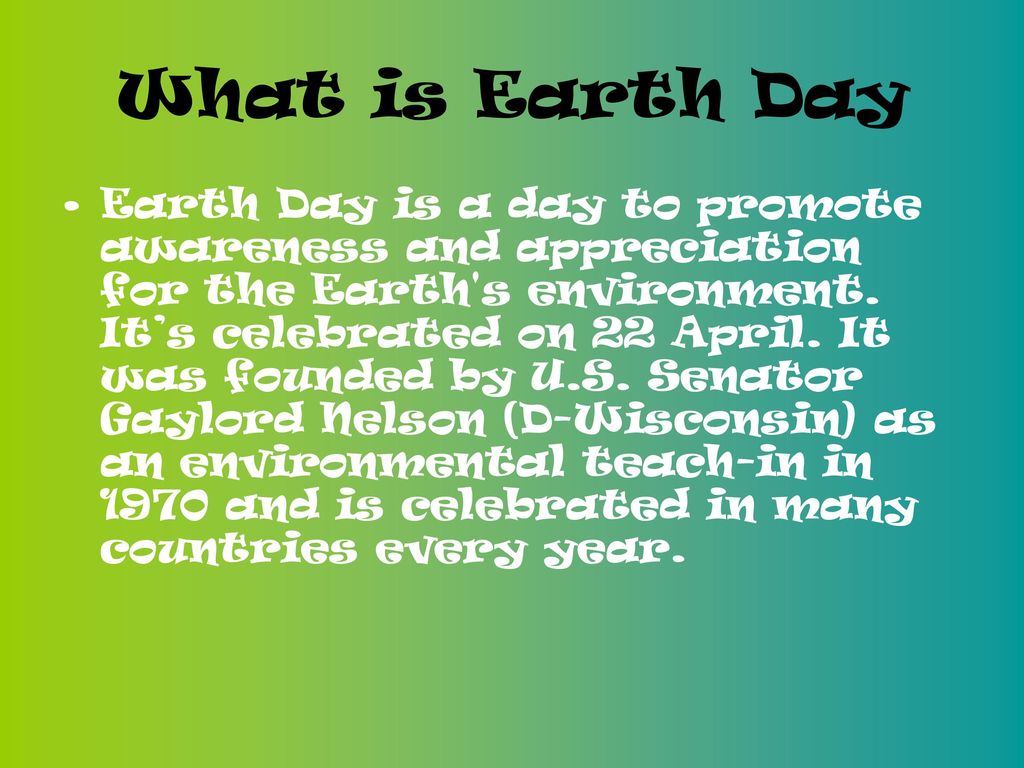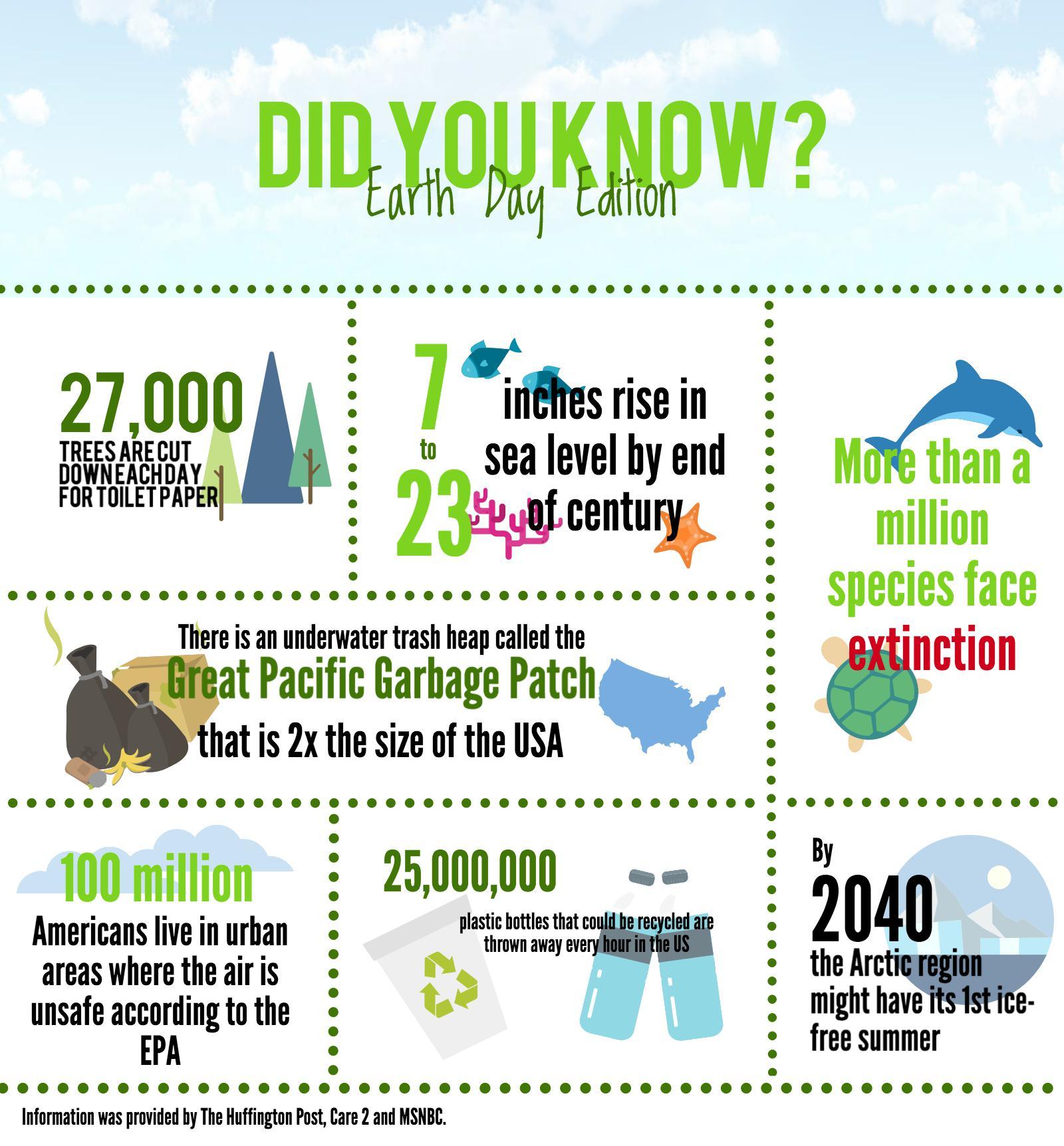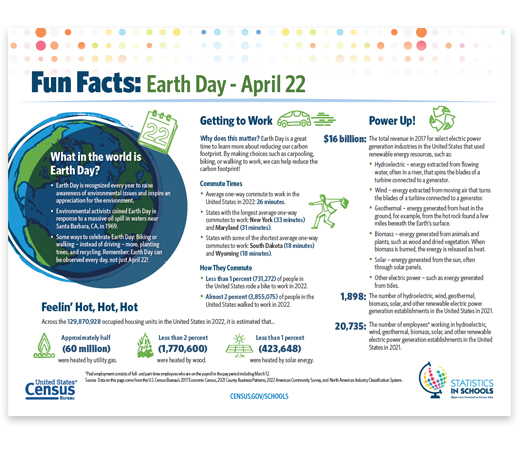Table of Contents
- Earth Day Facts: When It Is, How It Began, What to Do
- 7 Earth Day Facts That Will Inspire You To Make A Difference This Year
- Regan Alexis Elizabeth - ppt download
- A Brief History of Earth Day - YouTube
- Did You Know? Earth Day Edition – The Fourcast
- Earth Day Facts For Kids - Made with HAPPY
- 50 Fascinating Earth Day Facts For Kids - The Fact Site
- Earth Day Fun Facts
- 10 Interesting Facts About Earth Day That You Should Know
- Facts About Earth Day | 5 Facts About Earth Day by Of Houses and Trees


Earth Day, celebrated on April 22nd every year, is an opportunity for individuals, communities, and nations to come together and acknowledge the importance of protecting our planet. While many of us are familiar with the basics of Earth Day, there's more to this celebration than meets the eye. From its inception to the current state of our environment, here are 17 Earth Day facts you probably didn't know:

- The first Earth Day was celebrated in 1970, with an estimated 20 million participants across the United States. This groundbreaking event was organized by Senator Gaylord Nelson and Denis Hayes, who aimed to raise awareness about environmental issues and promote sustainability.
- Earth Day is now celebrated in over 190 countries, making it one of the most widely observed international events. This global recognition highlights the growing concern for environmental protection and the need for collective action.
- The Earth Day flag features a picture of the Earth from space, symbolizing our planet's beauty and fragility. This iconic flag has become a powerful symbol of the environmental movement, inspiring individuals to take action and protect our planet.
- The average American generates about 4.4 pounds of trash per day, contributing to the staggering amount of waste that ends up in landfills and oceans. By adopting simple habits like recycling, composting, and reducing plastic use, we can significantly decrease our environmental footprint.
- It's estimated that if every American replaced just one light bulb with an Energy Star-certified LED, it would prevent 90 billion pounds of carbon dioxide from entering the atmosphere, equivalent to the annual emissions of about 7.5 million cars. This simple switch can have a profound impact on reducing our carbon footprint.
- The world's largest living structure is the Great Barrier Reef, spanning over 2,300 kilometers off the coast of Australia. This incredible ecosystem is not only home to a vast array of marine life but also provides important coastal protection and supports commercial fisheries.
- A single tree can absorb up to 48 pounds of carbon dioxide per year, making reforestation efforts a critical component of mitigating climate change. By planting more trees and preserving our forests, we can help sequester carbon dioxide and maintain a healthy balance of oxygen and carbon dioxide in the atmosphere.
- The world's population is projected to reach 9.7 billion by 2050, putting additional pressure on our planet's resources and ecosystems. As the global population grows, it's essential to adopt sustainable practices and reduce our consumption to ensure a livable future for generations to come.
- Every year, about 8 million tons of plastic waste enter the world's oceans, harming marine life and contaminating the food chain. By reducing our plastic use, increasing recycling rates, and participating in beach cleanups, we can help mitigate this environmental disaster.
- The largest contributor to greenhouse gas emissions is the energy sector, accounting for around 65% of human-caused emissions. Transitioning to renewable energy sources like solar, wind, and hydroelectric power can significantly reduce our reliance on fossil fuels and decrease emissions.
- Climate change is causing sea levels to rise at a rate of about 3.2 millimeters per year, threatening coastal communities and ecosystems. By reducing our carbon footprint and supporting climate change mitigation efforts, we can help slow the rate of sea-level rise and protect vulnerable populations.
- The world's most endangered species is the Sumatran rhino, with fewer than 80 individuals remaining in the wild. Conservation efforts, such as habitat preservation and anti-poaching initiatives, are crucial to protecting this and other endangered species.
- Agriculture is responsible for around 70% of the world's freshwater usage, highlighting the need for more efficient irrigation systems and sustainable farming practices. By adopting water-saving techniques and reducing food waste, we can help conserve this vital resource.
- The world's largest waterfall, by volume, is actually located underwater, in the Denmark Strait, which lies between Iceland and Greenland. This natural wonder is a reminder of the awe-inspiring beauty and complexity of our planet's ecosystems.
- Earth Day has inspired numerous environmental policies and laws, including the Clean Air Act and the Endangered Species Act in the United States. These landmark legislations have helped protect our environment and promote sustainability, demonstrating the power of collective action and advocacy.
- The concept of "reduce, reuse, recycle" was first introduced in the 1970s, as part of the first Earth Day celebrations. This simple yet effective mantra has become a cornerstone of environmentalism, encouraging individuals to adopt sustainable habits and reduce waste.
- Some of the most effective ways to reduce your carbon footprint include eating a plant-based diet, using public transport, and reducing energy consumption. By making these simple changes, individuals can significantly decrease their environmental impact and contribute to a more sustainable future.

In conclusion, these 17 Earth Day facts offer a glimpse into the complexities and challenges of our planet's environmental landscape. As we celebrate Earth Day, let's remember that every small action counts, and collective efforts can lead to significant positive change. By embracing sustainable practices, reducing our waste, and promoting environmental awareness, we can work towards a greener, more resilient future for all.


Take Action Today

Start making a difference by incorporating eco-friendly habits into your daily life. Whether it's reducing your energy consumption, using public transport, or supporting organizations that work towards environmental conservation, every effort counts. Share these Earth Day facts with your friends and family, and let's work together to create a better future for our planet.
